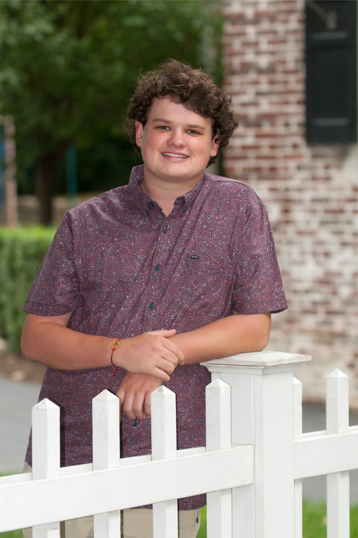A Mother’s Perspective: Sherri

Growing up, my son Charlie was smart, funny, and liked to play sports and spend time outdoors. However, Charlie began complaining of vision issues in his early childhood. When we took him to an eye doctor, we were told he was nearsighted and had an astigmatism– which the doctor said would be easily corrected with prescription glasses.
We tried the glasses, but Charlie continued to tell us that he was having trouble seeing the chalkboard at school. He was only six, but kept telling me, “Mom, this isn’t working,” so we had to keep getting him new prescriptions. It took years and countless appointments, but nothing seemed to truly fix his vision problems.
Beyond Charlie’s issues with his eyesight, his teachers also told us he had difficulty focusing during class, and they had to move him to the front of the room to help him pay attention. Many teachers suggested that we have him evaluated for attention deficit disorder (ADD), but his doctors determined he did not have the disorder.
Eventually, Charlie learned to cope with his vision issues– he squinted when playing lacrosse to see the ball better and held his phone very close to his face to see the screen. Despite his struggles, he remained a good student and athlete all throughout middle and high school.
Finding Relief in a Diagnosis
While Charlie had adapted to his less-than-stellar vision, there was always a sense that we should be doing more to help him. As he got older, he was able to articulate that he could not see clearly and his eyes were particularly sensitive– but we did not know what (if anything) we could do to fix this.
In 2015, when Charlie was a sophomore in high school, we decided to visit a contact lens specialist who suggested that Charlie’s unusual symptoms meant he might have keratoconus, a progressive condition that causes deteriorating vision and in severe cases, blindness. A follow up visit confirmed this diagnosis, and the eye doctor told us that Charlie had an advanced case of keratoconus and his left eye had progressed more than his right.
Hearing the doctor talk about keratoconus was a real epiphany for me. It suddenly made sense why he had struggled in school and in sports for so many years and why none of the previous vision correction attempts were successful. It really validated what Charlie had been saying, and I knew that we had to do whatever was necessary to help preserve his vision and give him a chance for a better life.
To find a doctor near you to get screened for keratoconus, use our locator tool.